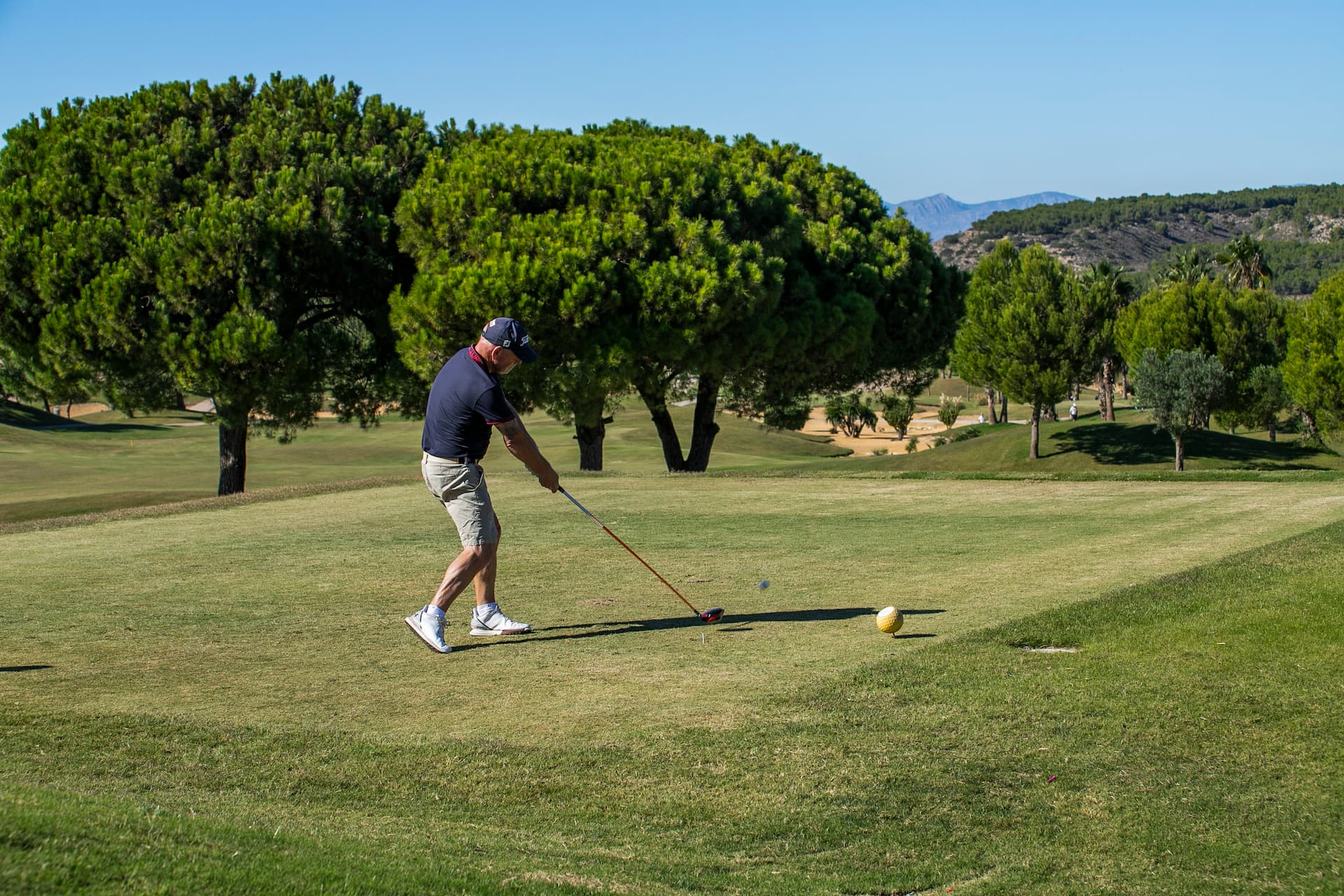
31 Jul How to calculate distance in golf without a laser rangefinder
One of the key skills for any golfer —whether you’re just getting started or playing off a low handicap— is distance control. And although modern technology offers us a wide array of tools like laser rangefinders, GPS watches or detailed course maps on mobile apps, not everyone has access to them. Nor are they essential to play good, smart golf.
At Vistabella Golf, we know that mastering your distances goes far beyond pointing a device at the flag. It’s about understanding the course, knowing your own game, and developing reliable habits that help you make smart decisions, shot after shot. Here’s how to do it.
Why distance control really matters in golf
We often get carried away by the huge drives we see in PGA Tour highlights or social media clips. But if we look more closely, the best results don’t come from length alone —they come from the ability to place the ball exactly where you intended.
When you know precisely how far you hit the ball with each club, you can choose better, miss fewer greens, avoid bunkers or hazards, and, crucially, hit the part of the green that gives you the best chance at your next putt. In short: golf becomes a strategic game. And that means better scores.
Mastering your distances step by step
Step 1: Know your own yardages
Before you start trying to work out how far you are from the pin, begin by getting to know yourself. How far do you hit your 8-iron? What about your pitching wedge? Or your sand wedge with a half swing? Knowing how far the ball travels with each club and each type of swing is the foundation of everything.
There’s no point knowing you’re 120 metres from the flag if your 9-iron sometimes goes 110 and other times 135. Distance control begins with consistency. Work first on producing a repeatable impact —and then start mapping your yardages.
How to figure out your distances
To develop consistency, nothing beats a properly marked practice facility —like the one at Vistabella Golf, with quality targets, bunker areas and putting green. Here’s our advice:
- Hit at least 10 balls per club.
- Ignore poor shots —they’re not a useful reference for real play.
- Record the average distance of your best strikes, not the furthest one.
- Use the same balls you would normally use on the course.
And don’t just stick to full swings. Learn to control two or three swing lengths (full, three-quarter, half) with each club. That gives you greater flexibility on the course. Every player has a unique distance map. Tour pro averages won’t help you if they don’t match your game. So build your own.
Step 2: Use the course’s own reference points
Most courses have distance markers at the side of the fairways —usually 100, 150 and 200 metres from the centre of the green. Sometimes, you’ll also find round markers embedded in the fairway. Learn to use them: these always measure to the centre of the green, not the flag.
When your ball is near one of these, count the steps between your ball and the marker. One long stride equals approximately one metre. For example:
- If you’re eight steps ahead of the 150-metre marker, you’re roughly 142 metres to the centre.
- If the flag is at the back, add 10–15 metres. If it’s at the front, subtract the same.
This technique, when used regularly, becomes surprisingly precise.
Step 3: Consider flag position
Aiming at the middle of the green is not the same as going straight for the flag. If you’re unsure where the pin is located on the day, assume it’s centred and adjust based on what you see:
- Add 10–15 metres if the flag is visibly at the back.
- Subtract if it looks close to the front edge.
When in doubt, aim for the centre. Consistency is about minimising errors, not chasing unnecessary risks.
Step 4: Factor in playing conditions
Wind, temperature and elevation all influence how far the ball actually flies:
- In cold or humid weather, the ball travels less. You may need 1 or 2 extra clubs.
- On hot, dry days, the ball travels further —perhaps one club less.
- At higher elevations, the air is thinner, so the ball flies further.
- And of course, wind is the biggest variable. Downwind? Take less. Into the wind? Add more. Sidewind? Consider the lateral movement.
At Vistabella Golf, we’re lucky to enjoy ideal Mediterranean conditions most of the year —but even here, easterly winds or cooler breezes can make a real difference on course.
Step 5: Work on your tempo and grip pressure
It’s not just about which club you choose —it’s how you swing it. If your rhythm varies or you grip too tightly, your distances will suffer.
- Keep grip pressure moderate —not too firm, not too loose.
- Focus on a smooth, consistent tempo. Rushing the downswing often leads to erratic yardages.
- Practise with different swing speeds using the same club. It’s a great way to expand your distance options without changing club.
Drills to improve your distance control
Controlling your distances without tech isn’t about magic. It’s about practice. Here are three tried-and-tested drills used by coaches and professionals alike:
1. The clock system
One of the most effective methods to master wedge and mid-iron distances. Imagine your body is the centre of an analogue clock. As you swing back, your hands and club point to different “times”:
- 9:00 → shaft parallel to the ground
- 10:30 → lead arm parallel to the ground
- 12:00 → full swing
If your tempo and acceleration are consistent, each “time” gives you a repeatable, measurable distance. It’s ideal for wedge play, but you can also apply it to irons with strong muscle memory.
2. Target drill
Place targets (alignment sticks, cones, headcovers) every 10 metres and practise hitting shots to land exactly on them. This helps fine-tune your feel and builds a direct association between swing size and distance.
3. Distance ladder
Choose a specific target (say, the 100-metre marker) and hit five balls in a row. Record the outcome of each shot. How many were on target? How many went long or short? What was your average deviation?
Repeat this drill with different clubs and targets. It’s the best way to track your consistency.
What if your swing isn’t consistent yet?
If you’re still developing your swing and struggle with consistency, don’t worry about measuring distances too precisely. First, focus on improving your technique. Once you can repeat your swing with confidence, the distances will start to stabilise —and then you’ll be ready to measure and refine.
The benefits of not relying on technology
While rangefinders and GPS units can be helpful, learning to calculate distances without them trains your golfing instincts:
- You become more in tune with the course.
- You learn more about your own game.
- You build a stronger feel for strategy and shot selection.
And if your battery dies or you forget your device at home, you’ll still be able to play confidently.
Calculating distances without technology is still great golf
If there’s one lesson we’ve learnt from Tour players, it’s that their edge doesn’t come from hitting it furthest —but from knowing exactly how far they hit each club. And from being able to repeat that impact with precision and trust.
Mastering your own yardages doesn’t require gadgets. It takes focus, attention to detail and honest practice. That’s the difference between a golfer who plays by guesswork and one who plays with intent. And that’s exactly the kind of experience we want you to live at Vistabella Golf —a course where every shot matters, where every metre counts, and where every player, beginner or expert, can improve, enjoy and thrive.
Ready to put this into action? Book your tee time at Vistabella Golf today and enjoy a professional golfing experience from the very first shot.


